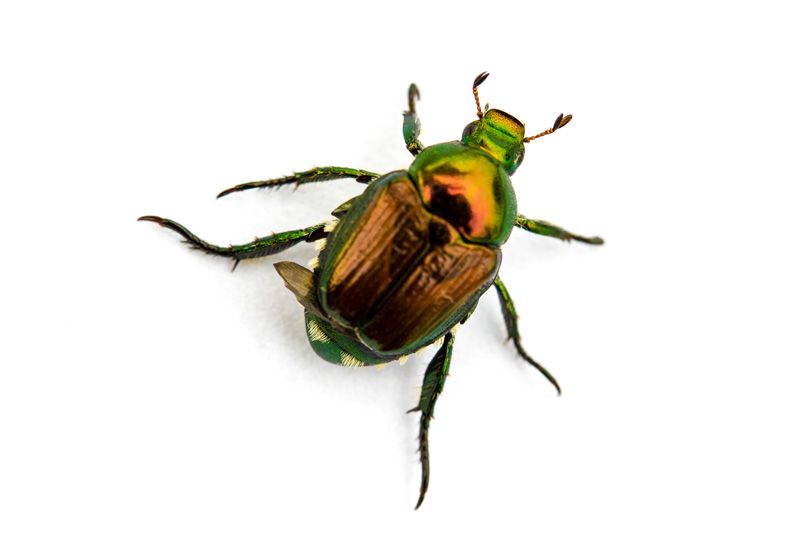
Japanese Beetle – Popilla japonica
Japanese Beetle – Popilla japonica
Description of Insect:
The Japanese beetle (Popillia japonica) is a well-known and highly destructive pest that originates from Japan. This metallic green beetle is easily identifiable by its distinct appearance and its tendency to devour a wide range of plants.
Adult Japanese beetles are about 15 mm long, with females being larger than males. They are recognized by their green bodies and coppery-brown wing covers. Around the edges of their abdomen, they have small white tufts of hair, which is one of their distinguishing features. Their larvae, or grubs, are C-shaped and white, typically found beneath the soil where they feed on rootlets and organic matter. They are covered with long brown hairs and short, blunt spines.
Japanese beetles are notorious for their voracious appetite and can consume over 300 species of plants. In addition, these beetles also emit a chemical signal that attracts other beetles, leading to even larger infestations. The adult beetles feed on the leaves, flowers, and fruit of plants, causing them to become skeletonized.
Life cycle of Japanese Beetle:
The life cycle of the Japanese beetle spans 1-2 years, with four stages: egg, larva, pupa, and adult. Adult Japanese beetles burrow into the soil and lay 40-60 eggs after every few days. The eggs hatch into larvae, also known as grubs, within about two weeks. These grubs feed on the roots of grasses and other plants, causing damage to lawns and crops. The grubs grow and mature, before they burrow deeper into the soil to pupate.
The pupal stage lasts for several weeks, with the pupae emerging as adult beetles in mid May to June-July. The adults are the most active and destructive phase of the beetle’s life cycle. After emerging, they begin feeding on plant foliage, flowers, and fruit, often causing significant damage to gardens, farms, and landscapes.
Damage they cause:
Japanese beetles are a significant threat to agriculture, horticulture, and landscaping, due to the extensive damage they inflict on a wide variety of plants.
- Destruction of Crops and lawns: The adult Japanese beetles are polyphagous, feeding on the leaves, flowers, and fruits of over 300 plant species. These include corn, tomatoes, grapes, roses, and numerous ornamental plants. They cause “skeletonization” of leaves, eating the soft tissue between the veins, which leaves the plant vulnerable to other pests and disease.
- Economic Losses: The damage caused by Japanese beetles can result in significant economic losses for farmers, landscapers, and homeowners. In agricultural areas, crops may be entirely destroyed by beetles, requiring farmers to spend money on managing and replacing damaged plants. Landscapers and gardeners may also experience costly damage to turfs and ornamental plants, requiring time and money to replant or treat affected areas.
- Threat to Biodiversity: As the Japanese beetle continues to spread, it poses a risk to native plant species and ecosystems. By consuming large quantities of native plants and crops, the beetles can alter local ecosystems, threatening the survival of native species.
